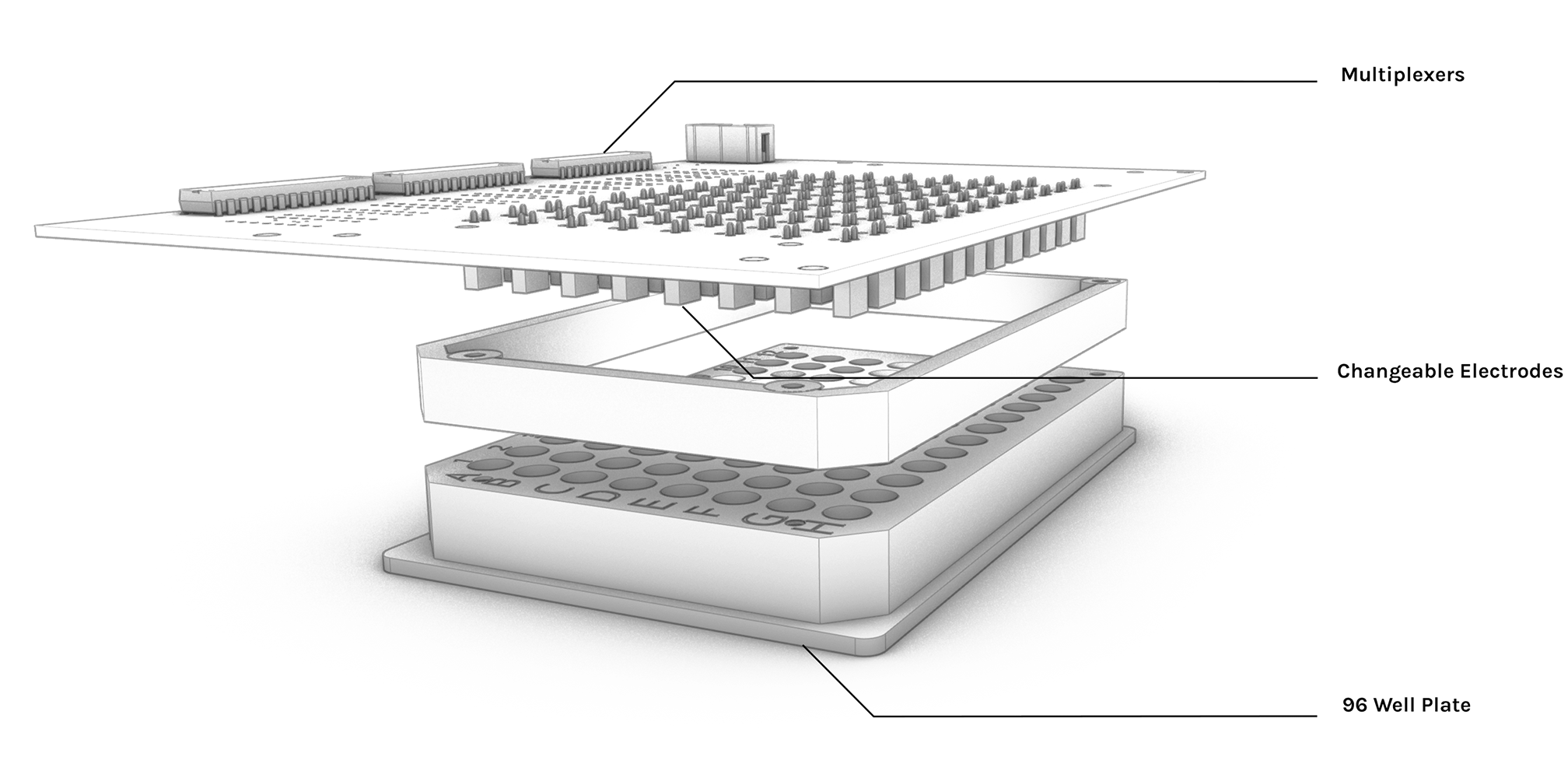
Bacterial Networked Electronic Interface:Toward an Internet of Living Things ... |
|
In the 21st century, we are increasingly aware of the complexity of phenomena that have immediate bearings on our lives - from climatic and ecological change to microbial pandemics - and the consequent need to make sense of this complexity. Biological and electronic systems have developed sophisticated means to
assimilate and
process highly complex streams of information, and initiate control
mechanisms to
respond appropriately.
Our team demonstrated bi-directional communication between bacteria and computers with the development of new wetware and hardware technologies. We propose to tackle material worldly issues by synergistically merging biological and electronic technologies and automate our responses to them. Our work represents a step toward a future where the biological state of anything becomes an extension of our digital reality, informing our relathionship to the natural world, and thus enabling the Internet of Living Things. |
|
We present a complete Electro-genetic toolkit comprised of:
We demonstrated the implementation of an Electro-Genetic signal-processing pipeline where information from the Internet is fed as an electrical signal to an engineered bacterial population. Together, these results pave the way to the developement of application in Bio-Hybrid robotics whith deep cultural significance. This is getting us one step closer to a global internet of living things |

Electro-Genetic signal processing |
Our interchangeable parts are assembled in circuit of multiple scale. At the molecular scale and at the bacterial population level, systems are buiolt through the assembly of 3 plasmids containing:
We standardised each of these part to communicate through a combination of transcription factors and promoters.
This modular design increase the flexibility of users where modification of a single part for a specific project will result in the redesign of a single plasmid
Our system have been designed with another level of assembly in mind, that, although beyond the scope of this study, will consist in the assembly of multiple parts engeneered population of bacteria (parts) into circuits
Wetware |
To interface digital technology with living organism, we engineered bacteria to receive and translate electrical signals into chemical ones. Teaching biology to “speak digital”.
This modular system allow for easy integration of traditional synthetic biology components including logic operations and bio sensors
We think of our collection of 3-plasmid system as a shelve of component of discrete values sitting in an robotic workshop. In the same way electronic designers have access to entire library of components enabling rapid prototyping and building of circuits, electro synthetic biologist assemble circuits of plasmids.
High throughput screening of electrically inducible promoters |
To extend our library of electro-genetic parts, we screened E. coli’s Genome for Electro-responsive promoters using custom hardware and software enabling new kind of experiments.
We found 19 promoters repsonding to various electrical signals. Taken together, these results brings us closer to being able to program biology in the exact same way we program microcontroller.
Hardware & Software |
|
To allow for automated and dynamical control of of gene expression through electronics and to make digital technology to “speak biology”, we develop a set of hardware tools for exploration of electro genetic synthetic systems. These devices not only adapt state of the art electro chemistry tools to the context of iGEM, they also promote completely new ways to control gene expression, and in general, to interface with living systems |

About our work |